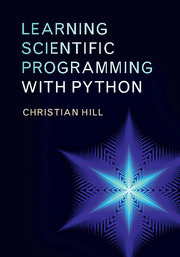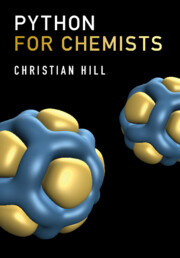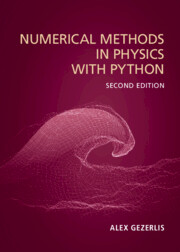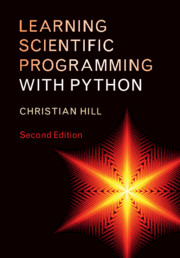Learning Scientific Programming with Python
Learn to master basic programming tasks from scratch with real-life scientifically relevant examples and solutions drawn from both science and engineering. Students and researchers at all levels are increasingly turning to the powerful Python programming language as an alternative to commercial packages and this fast-paced introduction moves from the basics to advanced concepts in one complete volume, enabling readers to quickly gain proficiency. Beginning with general programming concepts such as loops and functions within the core Python 3 language, and moving onto the NumPy, SciPy and Matplotlib libraries for numerical programming and data visualisation, this textbook also discusses the use of IPython notebooks to build rich-media, shareable documents for scientific analysis. Including a final chapter introducing challenging topics such as floating-point precision and algorithm stability, and with extensive online resources to support advanced study, this textbook represents a targeted package for students requiring a solid foundation in Python programming.
- Assumes no prior knowledge or experience of programming
- Online resources include sample data sets, solutions and tutorial materials for those looking for advanced study
- Using scientifically relevant and practical examples throughout enables students to quickly put their knowledge into practice
Reviews & endorsements
'This book is well illustrated and is supported by an extensive collection of resources online in the book’s website, scipython.com. This site has code listings and solutions to exercises. I would readily recommend this book to any student (or even a colleague) who wishes to achieve a solid foundation in Python programming.' Vasudevan Lakshminarayanan, Contemporary Physics
Product details
February 2016Adobe eBook Reader
9781316426784
0 pages
0kg
93 b/w illus. 52 tables 150 exercises
This ISBN is for an eBook version which is distributed on our behalf by a third party.
Table of Contents
- 1. Introduction
- 2. The core Python language I
- 3. Interlude: simple plotting with pylab
- 4. The core Python language II
- 5. IPython and IPython notebook
- 6. NumPy
- 7. Matplotlib
- 8. SciPy
- 9. General scientific programming
- Appendix A. Solutions
- Index.





